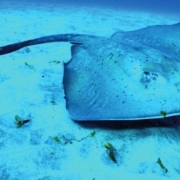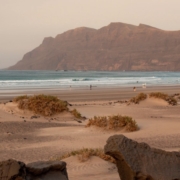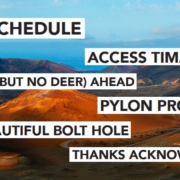If you’re snorkelling or scuba diving on Lanzarote in September, there’s a chance you’ll spot one of the rays that can be found in our waters. It’s always a magical experience and can also be a slightly alarming one.
Rays are, basically, flattened sharks. They have evolved perfectly to living on the seafloor, with eyes and gills on the top of their flat bodies and a mouth with powerful crushing teeth below.
The Common Eagle Ray is one of the most commonly seen rays in local waters. It’s named for its tapering wings, and is usually fairly small, rarely over 50cms in width. You’ll usually see it on open, sandy seabeds where it hunts for worms, crabs and molluscs, and you may often know that an eagle ray is in the area by the marks on the sand where it’s been feeding.
The Bull Ray is larger and can be identified by its duck-like snout and tigerish stripes on its upper body. It’s one of the most active rays, if you see one, it’s likely to be passing by rather than feeding.
One of the biggest frights you can get while diving around Lanzarote is the sight of a Roughtail Stingray. The sheer size and appearance of these creatures – an immense black disc more than 1.5 metres in diameter gliding through the water like a Stealth bomber – is awe inspiring, and often comes as a surprise.
If you do see one, it’s perfectly safe to follow it at a respectful distance. Stings are incredibly rare, and we haven’t heard any reports of them in Lanzarote waters. Nevertheless, the death in 2006 of Steve Irwin has given stingrays a bad reputation. Irwin, who was well-known for getting up close to dangerous animals, was fatally stung in the chest by a ray while filming it from close quarters.
The Common Stingray can reach sizes almost as large as the roughtail and is the more common of the two Stingray species. It’s sometime lighter in colour and slightly more diamond-shaped than the roughtail.
Finally, there’s the Angel Shark, which is not strictly a ray, but is very closely related. This flattened shark is endangered elsewhere but is often seen around the Canary Islands. Reaching lengths of up to two metres, some are grey-brown, and others have darker leopard-like mottles.
An encounter with an Angel shark is harmless but unforgettable. If you see the distinct “angel” shape of one lying buried on the sandy seabed, leave it alone. Attacks are rare and only happen when the creature is disturbed.
RARER RAYS
The Marbled Torpedo Ray is a less common fish that can sometimes be seen on sandy sea beds, often covered with a light covering of sand. Shaped like a frying pan, it swims by using its tail rather than its wings and is capable of giving a painful electric shock if you get too close. It won’t kill you, but you’re still not advised to find out.
The Butterfly Ray is another occasional sight – easily recognisable for its size and its broad wings, that make it look like a huge moth. Again, you’re likely to see its shape before you see the fish – it also buries itself in a light covering of sand at daytime.
Huge manta rays and mobulas are occasionally seen off Lanzarote, but your chances of seeing one near shore are fairly low. The spectacular Spotted Eagle Ray is also a rare sight in Canarian waters, but some divers have been lucky enough to meet this polka-dotted giant.











Leave a Reply
Want to join the discussion?Feel free to contribute!